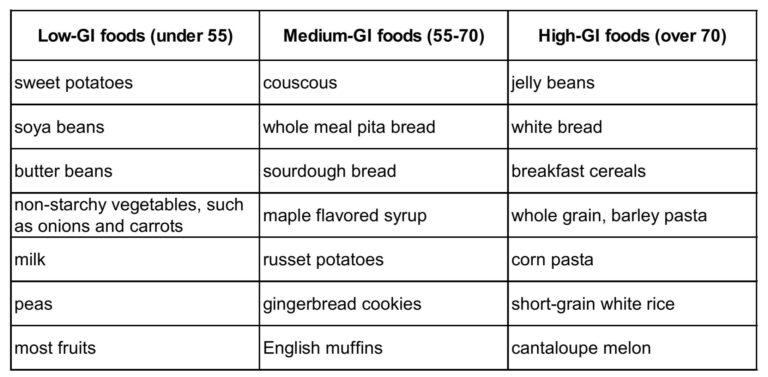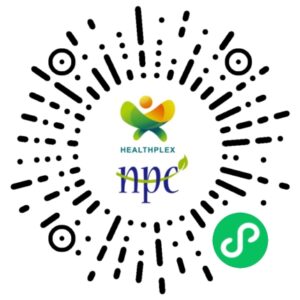Low-glycemic foods, such as sweet potatoes, rolled oats, chickpeas, and milk, are slower to raise a person’s blood sugar levels than foods with moderate or high scores on the glycemic index (GI).
A low-glycemic diet may offer health benefits, such as helping with blood sugar management and helping to reduce blood pressure.
This article lists some of the best low-GI foods and gives dietary tips for people following a low-GI diet.
How the GI scale works
The glycemic index (GI) is a scale from 1 to 100. Each food gets a score, and the lower the score, the longer that food takes to raise a person’s blood sugar levels.
The GI indicates how quickly carbohydrate-containing foods increase blood sugar levels compared with pure glucose. For example, white bread has a GI of 100.
GI scores fall into the following three categories:
Low-GI foods: These score under 55.
Medium-GI foods: These score between 55 and 70.
High-GI foods: These score above 70.
Below are some examples of foods with low, medium, or high GI scores according to a database by the University of Sydney in Australia:

Below are some low-GI foods and information about their potential health benefits.
1. Sweet potatoes
Boiled sweet potato has a GI score of 44. Other cooking methods may lead to a higher GI score.
Sweet potatoes are a good source of various nutrients, including:
• potassium
• fiber
• magnesium
• vitamin C
According to a 2021 review, the compounds in sweet potatoes may also offer anti-inflammatory and antioxidant properties. They may also help protect against cancer and high blood sugar.
2. Milk
Milk is a low-GI dairy product. The GI score for semi-skimmed milk on the University of Sydney database is 34, while full-fat milk scores range from 3 to 41.
Milk is rich in calcium, which is important for bone health. A 2021 review associates drinking around one cup of milk daily with a lower risk various health conditions including:
• stroke
• hypertension
• cardiovascular disease
Non-dairy types of milk may also have a low GI score. For example, full-fat soy milk has a GI score of 41, and oat milk has a score of 49. The score may vary among brands.
3. Fruits
Most fruits have low GI scores because of their fructose and fiber contents. Fruits with low GI scores include:
• apples — 44
• strawberries — 40
• grapefruit — 26
• watermelon — 50
• mango — 34
People on a low GI diet can eat fruits as a healthful snack or combine them to make a smoothie.
4. Chickpeas
Chickpeas, or garbanzo beans, are a low-GI legume, with a score of 28 on the scale.
Chickpeas are a good source of protein and fiber. One 100-gram (g) can of chickpeas contains 7.02 g of protein and 5.92 g of dietary fiber. They also contain key nutrients, such as calcium and potassium.
People can use chickpeas as a substitute for potatoes or white rice, which have higher GI scores. Roasted chickpeas make a quick and easy snack. Here’s an easy recipe for spicy roasted chickpeas.
Another tasty way to eat more chickpeas is by making hummus. This popular Middle Eastern dip is straightforward to prepare. Here’s how to make hummus from scratch.
5. Carrots
With a GI score of 16, raw carrots are a healthful alternative to bread for dipping into hummus. Cooking carrots may increase their GI score.
Carrots contain beta-carotene, which is good for eye health. They are also a great source of antioxidants, which help protect the body’s cells from damage.
People may enjoy carrots raw, boiled, or steamed as a side vegetable with any dish.
6. Kidney beans
With a GI score of 23, boiled kidney beans are a versatile low-GI food.
These beans are rich in protein and fiber, with 100 g of canned, dark red kidney beans containing 7.8 g and 7.01 g per cup, respectively. They also contain potassium and are very low in fat.
Kidney beans can make a great addition to meat-based or vegetarian chili. Here’s a simple veggie chili recipe to try.
7. Lentils
Scoring 22 on the GI scale, green, boiled lentils may be a great low-GI addition to lunches and dinners.
A 100 g portion of dry lentils contains 23.6 g of protein. They are also a good source of iron, phosphorus, and potassium.
An Indian dish called dhal is a wholesome and tasty way to enjoy lentils. Suitable for vegans, dhal is also easy to make at home. Here’s a simple dhal recipe to follow.
What affects GI?
Many factors influence a food’s GI score, including:
• Level of processing: More processed carbohydrates tend to have higher GI scores.
• Ripeness: The sugar in fruit breaks down as the fruit ripens, increasing the GI score.
• Preparation: The cooking process can break down carbohydrates, increasing the meal’s GI score.
• Dressing: Using an acidic seasoning, such as lemon, may lower a meal’s GI score.
• Type of starch: Amylose has a lower GI score than amylopectin.
Tips for following a low-GI diet
The foods above are a good place to start for people interested in a low-GI diet.
When following the diet, people do not necessarily need to avoid high-GI foods altogether. However, they may choose to limit them or eat them in moderation.
Anyone on a low-GI diet can also enjoy foods that do not contain carbohydrates, such as the following:
• meat
• eggs
• fish
• seafood
• olive oil
• butter
• herbs
• spices
• nuts
Source: By Lana Burgess, Medical News Today
*Disclaimer: This article is for learning and communication purposes only and does not have any commercial use. The copyright belongs to the original author. If you have any question, please contact us in time.


